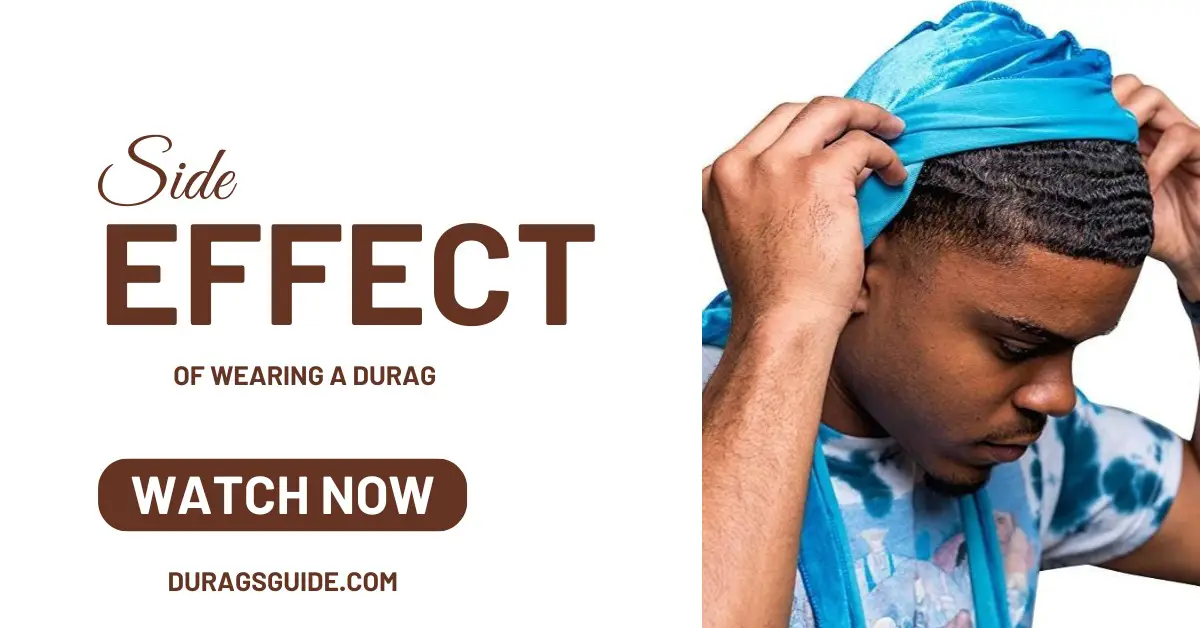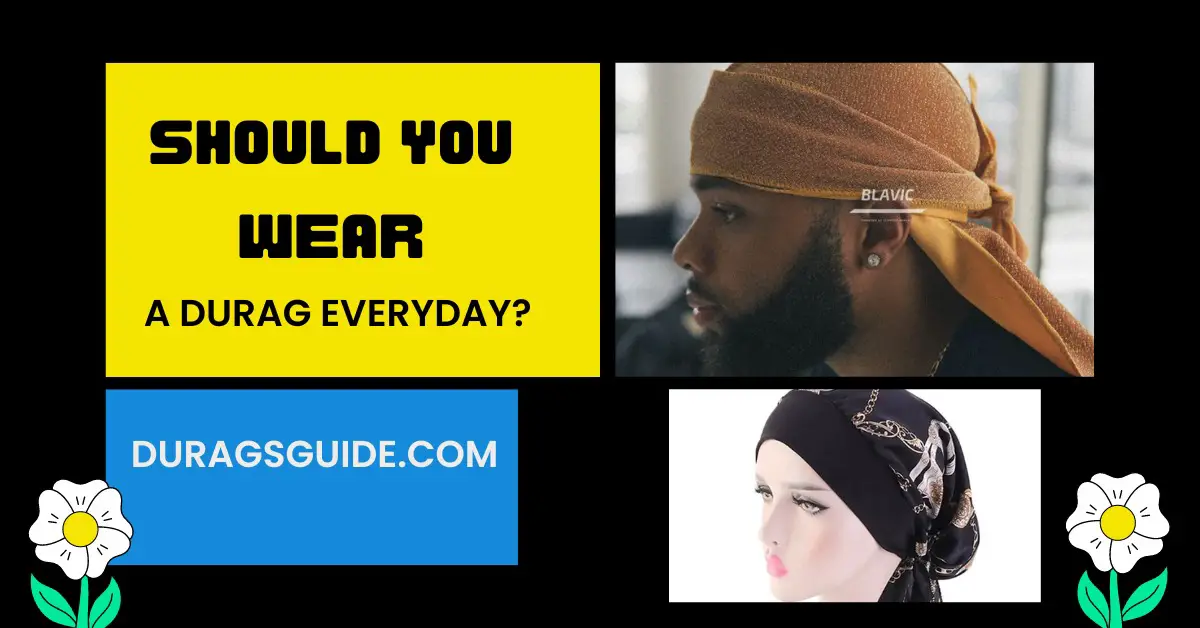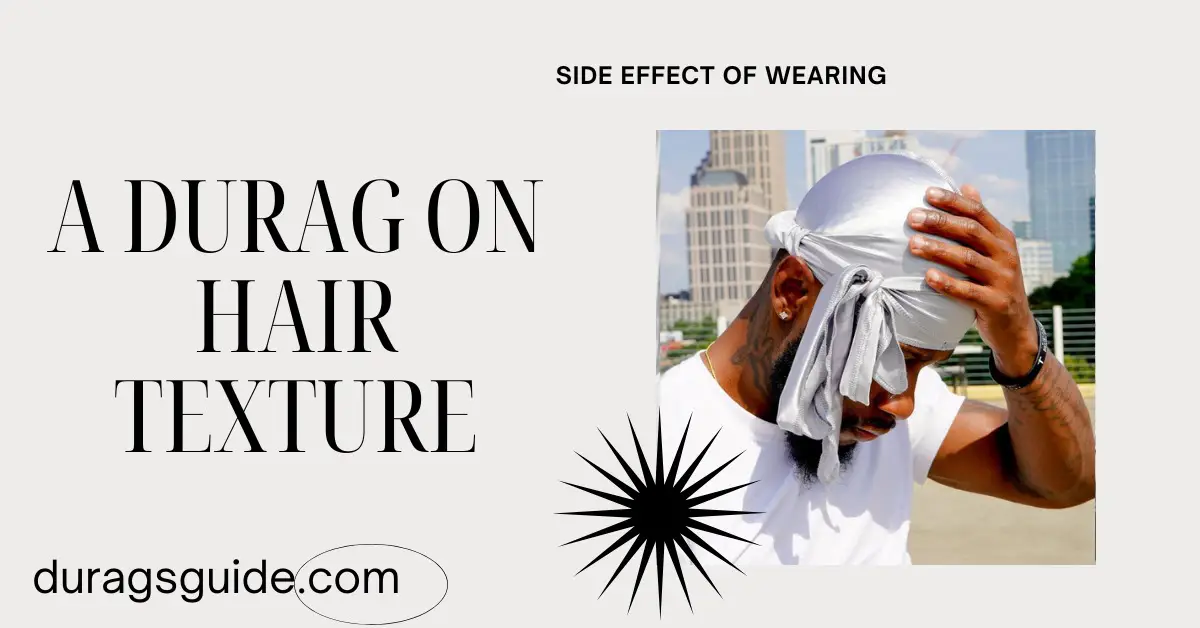Introduction
Durags have become quite popular among people as an useful accessory. Despite their appeal, in hair care and fashion it’s important to be aware of any drawbacks. This piece discusses how wearing a durag can affect the health of your hair tackling worries and offering guidance on how to use and care for them properly. By looking into these factors you’ll be equipped with information to decide whether to include durags, in your routine while keeping your hair in top condition.
Side effect of wearing a durag on hair
Wearing durags is commonly done for their appeal. To improve hair styling but its important to think about how they can affect the health of your hair. Here we’ll explain how wearing a durag can influence the well being of your hair.
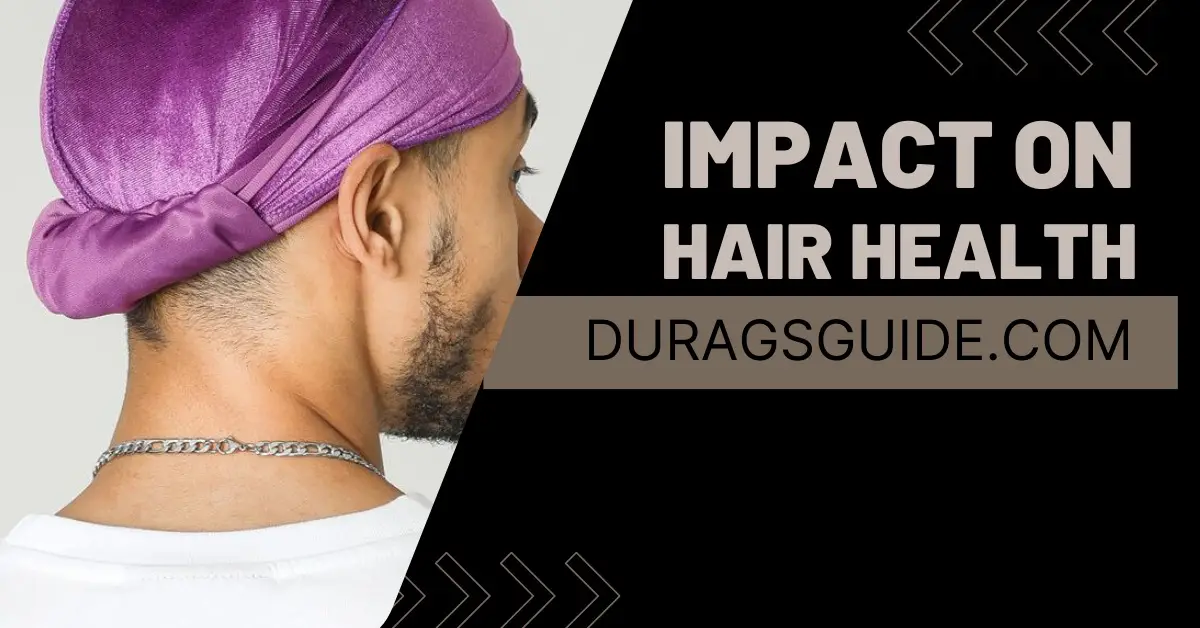
Does Wearing A Durag Cause Hair Loss?
Many people who wear durags often wonder if they can cause hair damage. While wearing a durag snugly can help create waves or keep hairstyles in place wearing them tightly could possibly cause traction alopecia. This condition happens when theres pressure, on the hair roots leading to breakage and eventual hair loss. It’s crucial to find a balance, between achieving your desired look and making sure the durag isn’t too tight to reduce the chances of hair loss.
Exploring the Relationship Between Durag Usage and Hair Loss
Wearing a durag can have effects, on hair loss based on factors like the material of the durag how well it fits and how long its worn. Durags made from silk or satin are often suggested due to their texture that reduces friction and helps prevent hair breakage. It’s important to be cautious about wearing a durag for extended periods especially while sleeping as it may lead to increased hair loss from prolonged pressure on the hair follicles. To minimize hair loss problems it’s crucial to be mindful of how and for how long you wear a durag.
Addressing Concerns About Damage to Hair Follicles
Besides the risk of hair loss wearing a durag could also harm your hair follicles. The friction and pressure from durags may irritate your scalp and hinder healthy hair growth. Additionally sweat, dirt and product buildup under the durag could create conditions that contribute to scalp problems, like dandruff or folliculitis. To protect your hair follicles from damage its recommended to practice hygiene by washing both your hair and the durag while ensuring that the durag isn’t too tight or constrictive.
To sum up using a durag can enhance your style. Safeguard your hair. Its important to consider how it may affect the health of your hair. By recognizing the reasons, behind hair loss and potential damage, to hair follicles when using a durag you can proactively reduce these risks. Keep your hair healthy.
Durag Usage Guidelines
To keep your hair healthy and make the most of it knowing how to wear a durag is crucial. Here we’ll delve into tips, on wearing a durag, such, as how to wear it how long to keep it on and the best ways to do so.
Is wearing a durag good for your hair?
The decision of whether wearing a benefits your hair largely relies on how its worn and the purpose, behind it. Durags crafted from materials like silk or satin can be advantageous for hair health by reducing friction and preventing moisture loss, which helps in retaining oils and preventing breakage. Moreover durags can safeguard hairstyles like waves or braids by keeping them intact and reducing frizz. However wearing a durag tightly or for prolonged periods could potentially harm your hair as previously mentioned. Thus finding a balance and using a durag in moderation is crucial to enjoy its advantages without risking your hair health.
The frequency of using a varies based on preferences and hair care requirements. Some people may opt to wear a durag every day to maintain a hairstyle or protect their hair while sleeping while others may choose to wear it occasionally for special events or styling purposes. It’s essential to pay attention to your hair and scalps needs and avoid use of the durag as prolonged wearing might lead to problems such, as scalp irritation or hair breakage.
If you decide to wear a durag every day make sure it’s not too snug and give your hair and scalp some breathing room by taking breaks from wearing it.
How long should I have my durag on?
The duration for which you should wear a durag depends on the purpose and the condition of your hair. For instance, wearing a durag overnight can help to preserve hairstyles and prevent frizz, but it’s essential to ensure that the durag is not overly tight to avoid potential damage to hair follicles. Similarly, wearing a durag during the day for styling purposes should be done for a reasonable amount of time to achieve the desired result without causing unnecessary strain on the hair. Ultimately, it’s crucial to pay attention to how your hair responds to wearing a durag and adjust the duration accordingly to maintain hair health.
In summary, while wearing a durag can offer benefits for hair health and styling, it’s important to follow proper usage guidelines to minimize the risk of hair damage and ensure optimal results. By considering factors such as material, fit, frequency, and duration of wear, you can effectively incorporate a durag into your hair care routine while promoting healthy, vibrant hair.
Side Effect of wearing Durags on Hair Texture
Durags are often associated with creating and maintaining hairstyles such as waves, which can significantly impact hair texture. In this section, we’ll delve into how wearing a durag can affect hair texture and the potential implications for hair health.
Examining the Impact of wearing Durags on Hair Texture, Especially Waves
Durags are commonly used by individuals seeking to achieve or enhance waves in their hair. The compression provided by a durag helps to train the hair to lay flat and form distinct wave patterns. While durags can be effective in creating waves, it’s essential to recognize the potential drawbacks associated with this styling method.
Does Waves Cause Hair Loss?
One concern regarding the use of durags for creating waves is whether it can lead to hair loss. While waves themselves do not directly cause hair loss, the methods used to achieve and maintain them, such as tightly securing a durag, can potentially contribute to traction alopecia. This condition occurs when constant tension is applied to the hair follicles, leading to hair breakage and eventual hair loss. Therefore, it’s crucial to be mindful of how tightly the durag is worn to avoid placing excessive strain on the hair.

Maintaining Healthy Hair Texture While Wearing a Durag
While wearing a durag can help in creating and preserving hairstyles such as waves, it’s essential to prioritize hair health. Excessive compression from tightly secured durags can lead to flattened hair follicles and loss of natural volume over time. To maintain healthy hair texture while wearing a durag, it’s advisable to periodically loosen the durag to allow the hair and scalp to breathe. Additionally, incorporating moisturizing and conditioning treatments into your hair care routine can help to keep the hair hydrated and prevent dryness, damages or brittleness.
Balancing Styling Goals with Hair Health
Achieving and maintaining desired hairstyles such as waves often requires a balance between styling goals and hair health. While durags can be effective tools for styling, it’s crucial to prioritize the long-term health of your hair. This may involve using durags in moderation, avoiding excessive tension when securing them, and implementing regular hair care practices to promote overall hair health.
In summary, while durags can be effective in creating and maintaining hairstyles such as waves, it’s important to be aware of their potential impact on hair texture and health. By understanding the relationship between durag usage, hair texture, and hair health, you can make informed decisions to achieve your styling goals while preserving the integrity of your hair.
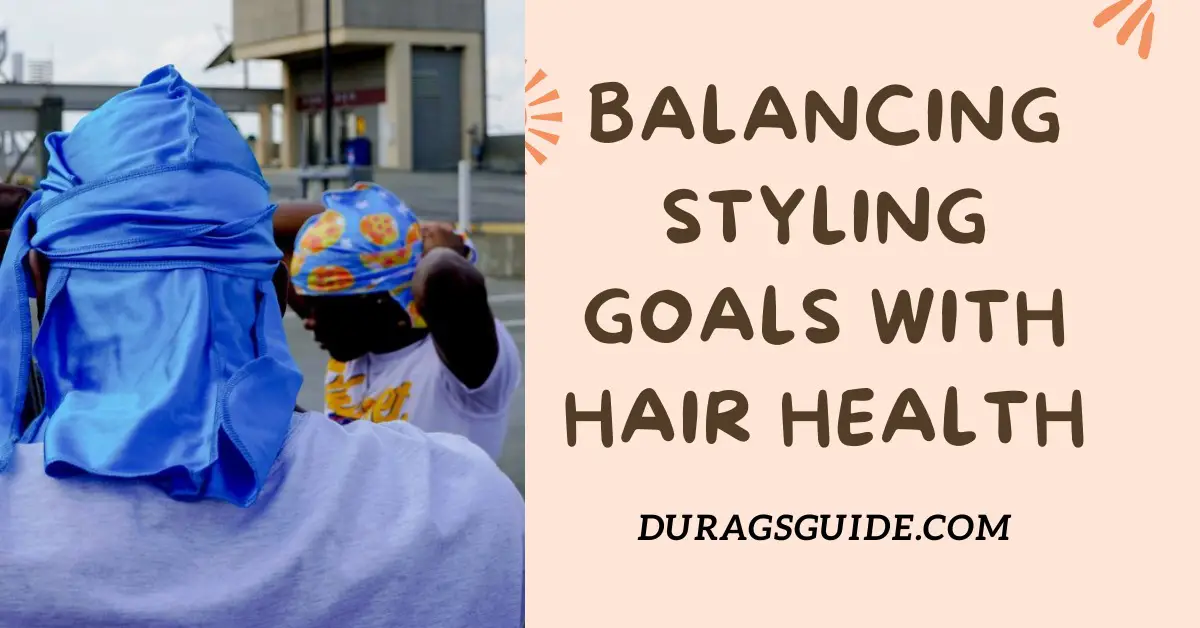
Durag Usage during Sleep
The decision to wear a durag while sleeping can significantly impact hair health and overall comfort during rest. In this section, we’ll explore the considerations and implications of wearing a durag while asleep.
Is it OK to sleep with a durag on?
Sleeping with a durag on is a common practice among individuals seeking to preserve hairstyles, such as waves, or protect their hair from friction and moisture loss during the night. However, whether it is okay to sleep with a durag on depends on various factors, including the individual’s hair type, the tightness of the durag, and personal comfort preferences.
Pros and Cons of Sleeping with a Durag
One of the primary benefits of wearing a durag while sleeping is that it helps to maintain hairstyles and prevent frizz by keeping the hair in place and minimizing movement. Additionally, durags made from materials like silk or satin can reduce friction and moisture absorption, which can help to retain hair moisture and prevent breakage.
However, there are also potential drawbacks to sleeping with a durag on. Wearing a durag that is too tight or restrictive can lead to discomfort and potentially contribute to hair loss due to excessive tension on the hair follicles. Additionally, wearing a durag for extended periods, such as overnight, can create a warm and humid environment conducive to bacterial growth, which may increase the risk of scalp issues such as dandruff or folliculitis.
Tips for Safe and Comfortable Durag Use During Sleep
If you choose to sleep with a durag on, it’s essential to prioritize safety and comfort to minimize the risk of hair and scalp issues. Here are some tips for safe and comfortable durag use during sleep:
- Choose a durag made from a smooth and breathable material like silk or satin to reduce friction and moisture loss.
- Ensure that the durag is not too tight or restrictive, as this can lead to discomfort and hair damage. It should be snug enough to stay in place but not overly tight.
- Consider loosening the durag or removing it periodically throughout the night to allow your hair and scalp to breathe.
- Maintain good hygiene practices by regularly washing both your hair and durag to prevent the buildup of sweat, dirt, and product residue.
- If you experience any discomfort or signs of hair or scalp issues while sleeping with a durag on, consider alternative methods for preserving your hairstyle or protecting your hair during sleep.
In summary, while sleeping with a durag on can offer benefits for preserving hairstyles and protecting hair health, it’s important to be mindful of proper usage and potential risks. By following these tips and prioritizing safety and comfort, you can enjoy the benefits of sleeping with a durag while minimizing the risk of hair and scalp issues.
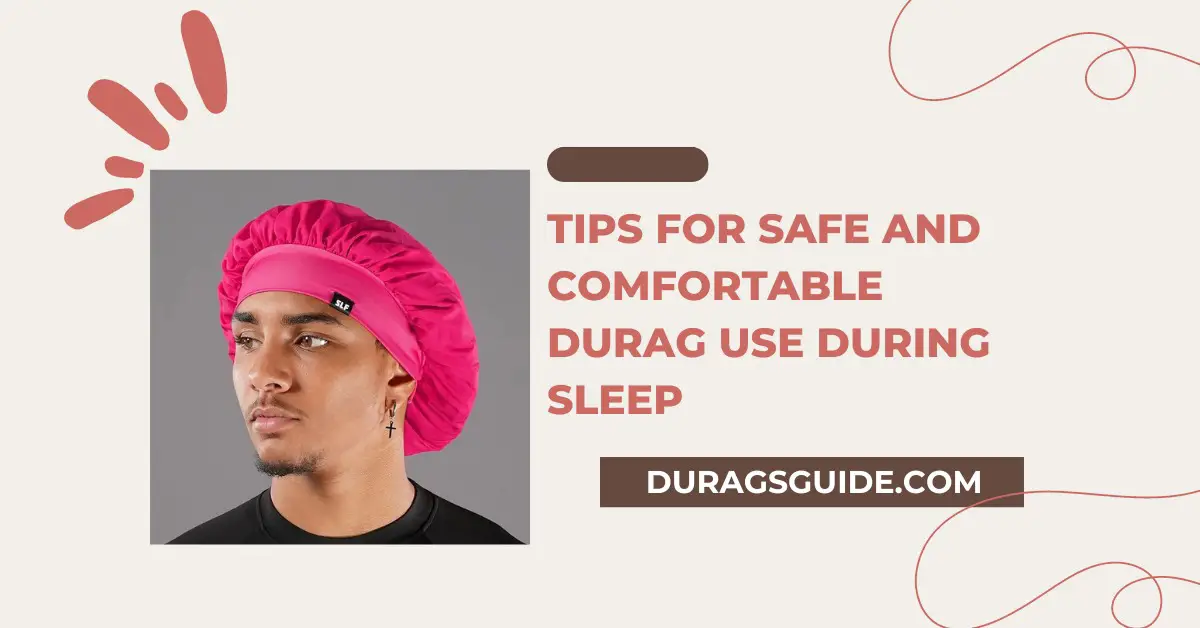
Hair Loss from Wave Caps
Wave caps, similar to durags, are commonly used by individuals to create and maintain wavy hairstyles. In this section, we’ll explore the potential connection between wave caps and hair loss, as well as strategies for minimizing the risk of hair loss while using them.
Understanding the Relationship Between Wave Caps and Hair Loss
Wave caps are designed to provide compression to the hair, helping to train it into wave patterns. While this compression can be effective in achieving waves, it also poses a risk of contributing to hair loss, particularly if the wave cap is worn too tightly or for extended periods.
Potential Causes of Hair Loss from Wave Caps
Hair loss associated with wave caps can occur due to several factors:
- Traction Alopecia: Constant tension on the hair follicles from tightly secured wave caps can lead to traction alopecia, a condition characterized by hair breakage and eventual hair loss.
- Reduced Blood Circulation: Excessive compression from wave caps can restrict blood flow to the scalp, potentially depriving hair follicles of essential nutrients and oxygen.
- Scalp Irritation: The snug fit of wave caps can cause friction and irritation on the scalp, leading to inflammation and damage to hair follicles.
Minimizing the Risk of Hair Loss from Wave Caps
To reduce the likelihood of experiencing hair loss from wearing wave caps, consider the following strategies:
- Choose the Right Size: Opt for a wave cap that fits comfortably without being too tight or restrictive. It should provide gentle compression without causing discomfort or tension on the hair follicles.
- Limit Wear Time: Avoid wearing wave caps for extended periods, especially during sleep, to prevent prolonged pressure on the hair follicles. Instead, give your hair and scalp breaks from wearing wave caps to allow them to breathe and recover.
- Practice Good Hygiene: Regularly wash both your hair and wave cap to remove sweat, dirt, and product buildup, which can contribute to scalp issues and hair loss.
- Monitor for Signs of Hair Loss: Pay attention to any signs of hair breakage, thinning, or scalp irritation while wearing wave caps. If you notice any concerning symptoms, consider adjusting your usage habits or seeking advice from a healthcare professional.
Prevention Strategies
Preventing potential side effects associated with wearing a durag requires adopting proactive measures to promote hair health and minimize risks. In this section, we’ll explore various prevention strategies to ensure that durag usage remains safe and beneficial for your hair.
Tips for Minimizing Side Effects of Durag Usage:
- Choose the Right Material: Opt for durags made from smooth and breathable materials like silk or satin, which reduce friction and moisture loss. Avoid durags made from rough or abrasive fabrics that can cause damage to the hair shaft.
- Ensure Proper Fit: Select a durag that fits snugly without being overly tight or restrictive. The durag should stay in place comfortably without causing discomfort or tension on the hairline or scalp.
- Limit Durag Wear Time: Avoid wearing a durag for extended periods, especially during sleep, to prevent prolonged pressure on the hair follicles. Instead, wear the durag for short intervals to achieve styling goals and allow your hair and scalp to breathe.
- Practice Good Hygiene: Regularly wash both your hair and durag to remove sweat, dirt, and product buildup, which can contribute to scalp issues and hair loss. Use a mild shampoo and conditioner suitable for your hair type to keep your hair and scalp clean and healthy.
- Loosen Durag During Rest: If wearing a durag while sleeping, consider loosening it or removing it periodically throughout the night to alleviate pressure on the hair follicles and allow for better airflow to the scalp.
- Monitor Hair Health: Pay attention to any signs of hair breakage, thinning, or scalp irritation while wearing a durag. If you notice any concerning symptoms, adjust your durag usage habits accordingly and seek advice from a healthcare professional if needed.
- Rotate Durag Styles: Avoid relying on a single durag style or wearing a durag too frequently. Instead, rotate between different durag styles and allow your hair and scalp to rest and recover between wearings.
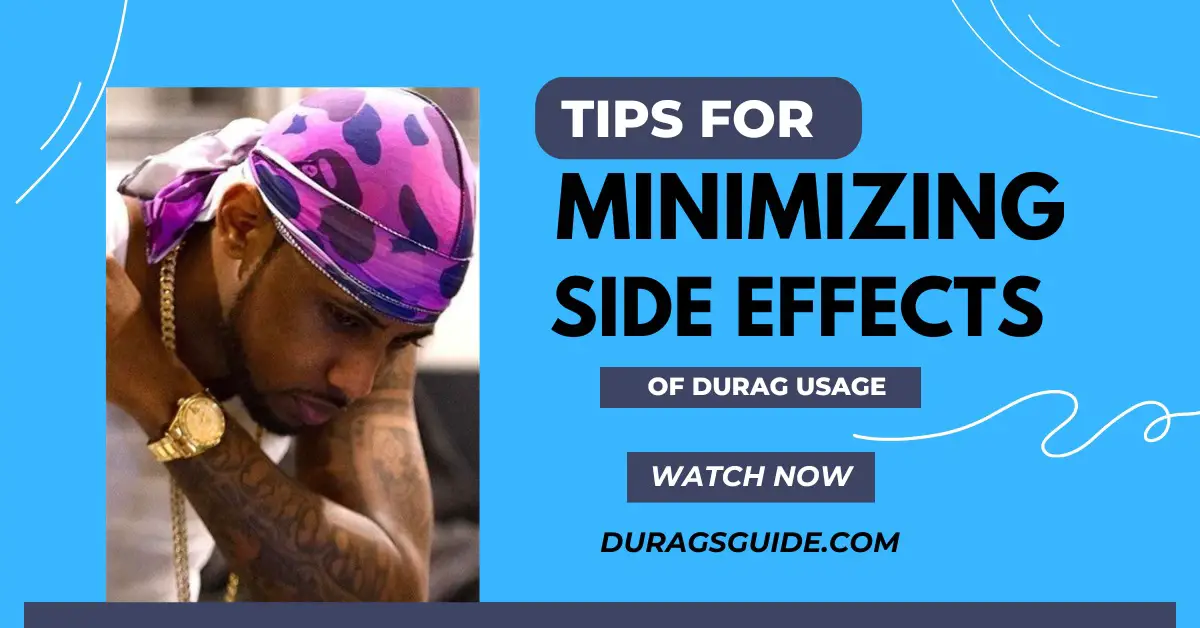
Conclusion
In conclusion, the side effects of wearing a durag are multifaceted, but with proper knowledge and precautions, you can mitigate potential risks and enjoy its benefits for hair styling and protection.
Throughout this article, we’ve explored various aspects of durag usage, including its impact on hair health, guidelines for proper usage, and strategies for prevention and management of side effects.
It’s clear that wearing a durag can offer benefits such as maintaining hairstyles, protecting hair from friction and moisture loss, and promoting hair health. However, it’s essential to be mindful of potential drawbacks, such as hair loss, scalp irritation, and follicle damage, which can arise from wearing a durag excessively tight or for extended periods.
By following the guidelines outlined in this article, including choosing the right material and fit for your durag, limiting wear time, practicing good hygiene, and monitoring hair health, you can minimize the risk of experiencing side effects while still enjoying the convenience and style that durags offer.
Ultimately, the key is to strike a balance between achieving your desired hairstyle and maintaining the health and integrity of your hair. By being informed and proactive about durag usage, you can ensure that it remains a valuable tool in your hair care routine while safeguarding the long-term health of your hair.
Remember to listen to your hair’s needs, adjust your durag usage habits accordingly, and seek professional advice if you experience any concerning symptoms or side effects.
With proper care and attention, wearing a durag can be a positive and enjoyable experience, allowing you to express your personal style while keeping your hair healthy and vibrant.
FAQS
Does wearing a durag cause hair loss, baldness, or thinning?
No, wearing a durag typically does not cause hair loss, baldness, or thinning.
Durags are often used to maintain hairstyles, protect hair, and promote healthy growth.
Hair loss or thinning can be caused by various factors unrelated to wearing a durag.
Is Durag haram?
The permissibility of wearing a durag in Islam depends on individual interpretations and cultural norms.
Some scholars may consider it permissible if it serves a practical purpose, such as protecting the hair.
However, opinions may vary, and it’s best to consult with a knowledgeable religious authority for specific guidance.
Does wearing a hat affect your brain? just write in three lines
Wearing a hat typically does not affect your brain in any significant way.
Hats primarily provide protection from environmental elements like sun or cold.
There’s no scientific evidence suggesting a direct impact on brain function due to wearing a hat.
Is the Embr Wave safe?
Yes, the Embr Wave is considered safe for most users.
It utilizes temperature regulation technology to provide comfort.
However, individuals with certain medical conditions should consult a healthcare professional before use.
Is it okay for Hispanics to wear durags?
Yes, it’s okay for Hispanics, like people of any other ethnicity, to wear durags if they choose.
Durags are not exclusive to any particular race or culture; they are primarily functional hair accessories.
Fashion and personal style choices are diverse and should be respected regardless of ethnicity.
